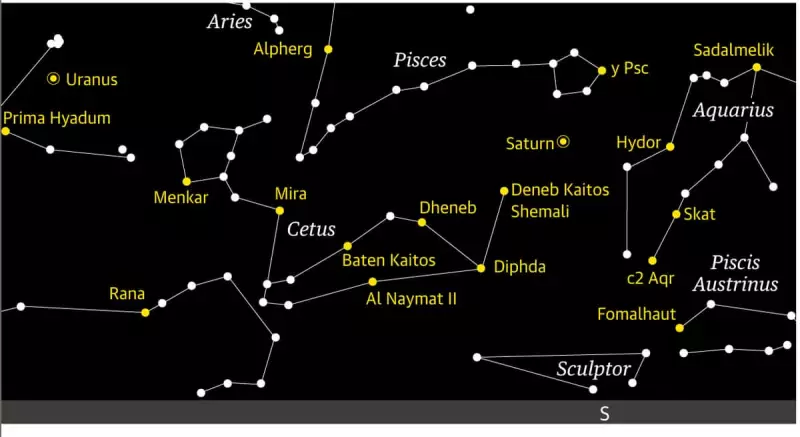
This week offers a fantastic opportunity for stargazers across the UK to seek out a celestial giant: the constellation Cetus, the sea monster. Although its stars are faint, the challenge of tracing its vast outline across the heavens is a rewarding experience for any astronomy enthusiast.
A Sprawling Celestial Beast
Cetus is the fourth largest of the 88 modern constellations, covering an immense area of approximately 1,230 square degrees. The chart depicts the view looking south-southeast from London on 17 November at 20:00 GMT. The good news is that this view will remain largely consistent throughout the entire week, giving you multiple chances to find it.
Because it is positioned near the celestial equator, this constellation is visible from both the northern and southern hemispheres. Its lack of brilliantly bright stars means you'll need a clear, dark night away from city lights for the best chance of success.
Mythology and a Winking Star
In classical Greek mythology, Cetus was the sea monster sent by the god Poseidon to ravage the kingdom of King Cepheus and Queen Cassiopeia. The hero Perseus famously saved their daughter, Andromeda, by using the head of the gorgon Medusa to turn the monster to stone.
The constellation also holds a special treat for observers. It contains the star Omicron Ceti, better known as Mira. This is a variable star whose brightness changes dramatically over a cycle of roughly 330 days. It can disappear from naked-eye view at its faintest and then return to prominence. Currently, Mira is near its minimum brightness, but it's one to watch in the coming months as it brightens again.
Your Stargazing Guide
To find Cetus, face south-southeast on a clear evening. Be patient and allow your eyes to adjust to the darkness. While it may not be the most dazzling constellation, the hypnotic process of connecting its faint dots to reveal the sea monster is a unique astronomical adventure. This week provides the perfect window to track down this legendary beast in the night sky.




